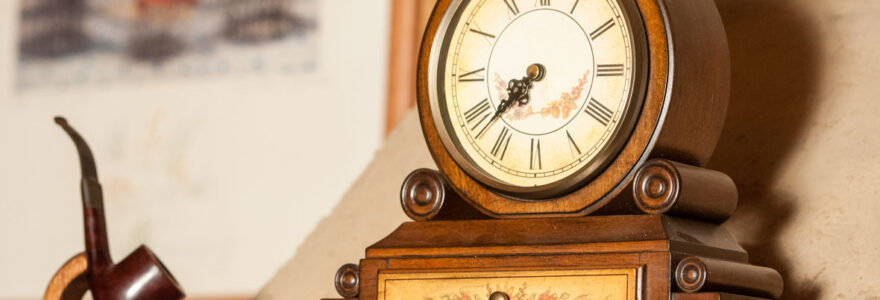Antique marble mantel clocks showcase exquisite craftsmanship and intricate mechanics that have fascinated collectors and enthusiasts for centuries. These timepieces not only serve the practical purpose of telling time but also provide a window into the rich history of clockmaking. From the elegant design to the complex movement, every aspect of these clocks is a testament to the skill and artistry of the artisans who crafted them. In this article, we will explore the fascinating mechanics behind antique marble mantel clocks and delve into the craftsmanship that makes them true masterpieces.
History and Origin of Marble Mantel Clocks
The history of marble mantel clocks dates back to the 18th century when they first emerged as a symbol of status and refinement among the European aristocracy. France, in particular, played a significant role in the development of these clocks, with renowned clockmakers such as Jean-Baptiste Baillon and Pierre-Philippe Thomire creating elaborate designs for the nobility.
Marble mantel clocks gained popularity throughout Europe and the United States during the 19th century. The Industrial Revolution enabled mass production, making these clocks more accessible to a wider audience. Despite their mass-produced nature, many of these clocks retained their exquisite craftsmanship and attention to detail.
Design and Aesthetics of Antique Marble Mantel Clocks
Architectural Influences on Mantel Clock Designs
The designs of antique marble mantel clocks were heavily influenced by the prevailing architectural styles of their time. Neoclassical elements, inspired by ancient Greece and Rome, were commonly incorporated into the clock cases. Columns, pediments, and friezes adorned the marble cases, emulating the grandeur of classical architecture.
The Rococo style also left its mark on mantel clock design, featuring curvaceous lines, ornate floral motifs, and asymmetrical compositions. These clocks exuded a sense of elegance and grace, often displaying intricate bronze or gilt decorations.
Materials and Textures Used in the Design
Marble was the material of choice for the cases of these clocks due to its durability and aesthetic appeal. Various types of marble, such as Carrara, Sienna, and Belgian black, were used, each bringing its unique color and veining patterns to the design.
In addition to marble, antique mantel clocks incorporated a variety of other materials, such as bronze, ormolu (gilded bronze), and porcelain. The combination of these materials added richness and complexity to the overall design, enhancing the visual appeal of the clocks.
Iconography and Symbolism in Mantel Clock Artistry
Antique marble mantel clocks often featured intricate iconography and symbolism, adding a layer of meaning to their aesthetic beauty. Mythological figures, such as the Greek god Hermes or the Roman goddess Diana, were commonly depicted, representing various virtues or allegories.
Other symbolic elements, such as floral motifs, animals, and celestial bodies, were also prevalent in the artistry of these clocks. These symbols conveyed messages of love, prosperity, and the passage of time, invoking deeper contemplation and appreciation from the viewer.
Exploring the Mechanics of Antique Marble Mantel Clocks
Beneath their beautiful exteriors, antique marble mantel clocks housed intricate mechanical movements that made them functional timekeepers. Most of these clocks utilized either a pendulum or a balance wheel mechanism to regulate the time, ensuring accurate and consistent measurements.
The movements of these clocks were typically created by skilled clockmakers who meticulously crafted each component by hand. The precision and craftsmanship required to produce these mechanisms were a testament to the dedication and expertise of these artisans.
Collecting and Preserving Antique Marble Mantel Clocks
Collecting antique marble mantel clocks can be a rewarding pursuit for enthusiasts and connoisseurs. When acquiring these clocks, it is essential to consider factors such as authenticity, condition, and provenance. Clocks with original components and well-preserved cases generally command higher prices in the market.
Preserving antique marble mantel clocks requires proper care and maintenance. Regular dusting, gentle cleaning with mild solutions, and avoiding exposure to direct sunlight or extreme temperature fluctuations are crucial to ensure their longevity. Seeking professional help for restoration and conservation is recommended to address any issues and maintain the integrity of these precious timepieces.
Appreciating the Artistry and Craftsmanship of Antique Marble Mantel Clocks
Antique marble mantel clocks are not merely functional objects; they are exquisite works of art that showcase the talent and skill of their creators. The meticulous attention to detail, the harmonious blend of materials, and the aesthetic refinement make these clocks true masterpieces.
By appreciating the artistry and craftsmanship of these clocks, we gain insight into the historical and cultural contexts in which they were created. Their presence in modern homes allows us to connect with the past and appreciate the enduring beauty of these timeless treasures.
Common Issues and Maintenance Tips for Antique Marble Mantel Clocks
Signs of Ailing Clock Mechanics
- Erratic timekeeping or complete stoppage
- Unusual noises or grinding sounds
- Uneven or irregular movement of the pendulum or balance wheel
- Worn-out or damaged components
Appropriate Cleaning Techniques
- Use a soft brush or microfiber cloth to remove dust and debris
- For more thorough cleaning, use mild soap and water solutions
- Avoid abrasive materials or harsh chemicals that may damage the delicate surfaces
Handling and Storing Antique Mantel Clocks
Handle the clocks with care, avoiding excessive force or pressure
Avoid exposing the clocks to direct sunlight or extreme temperature changes
Store the clocks in a dry and stable environment to prevent damage from humidity or moisture
Determining the Value of Antique Marble Mantel Clocks
The value of antique marble mantel clocks is influenced by various factors, including their rarity, condition, provenance, and demand in the market. Clocks with unique designs, exceptional craftsmanship, or historical significance often command higher prices.
Appraisals by knowledgeable experts, research into comparable sales, and understanding the current market trends are essential in accurately determining the value of these clocks. It is advisable to consult reputable antique dealers or auction houses for professional guidance when assessing the worth of antique marble mantel clocks.

